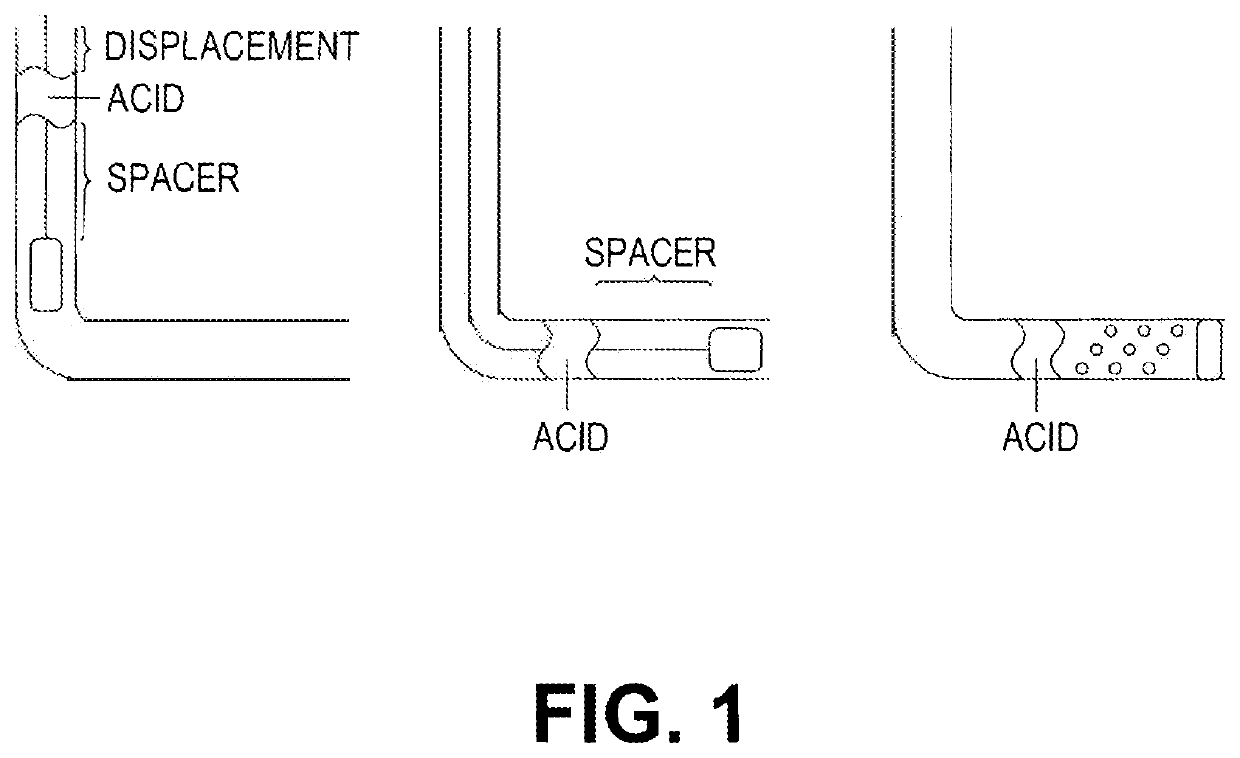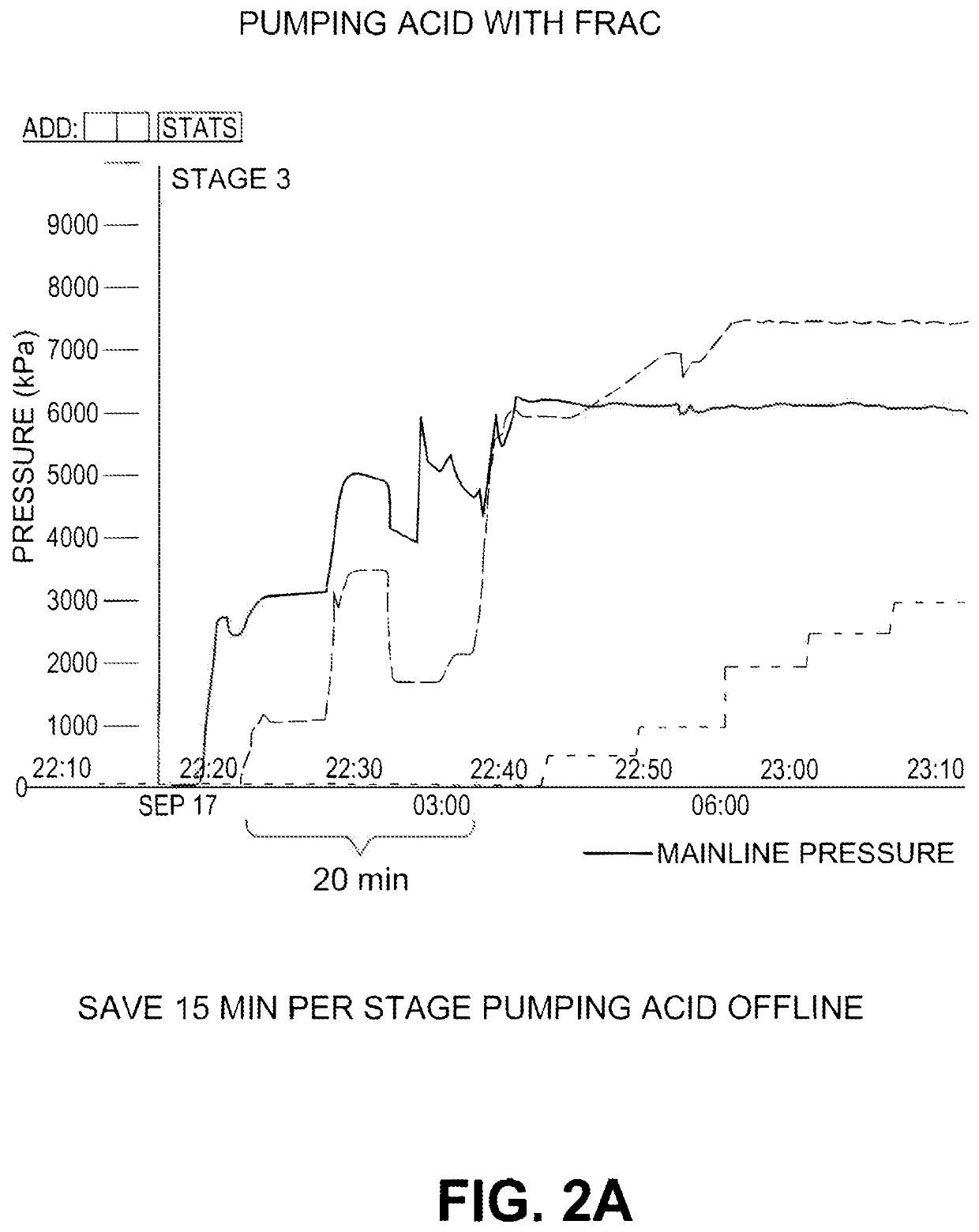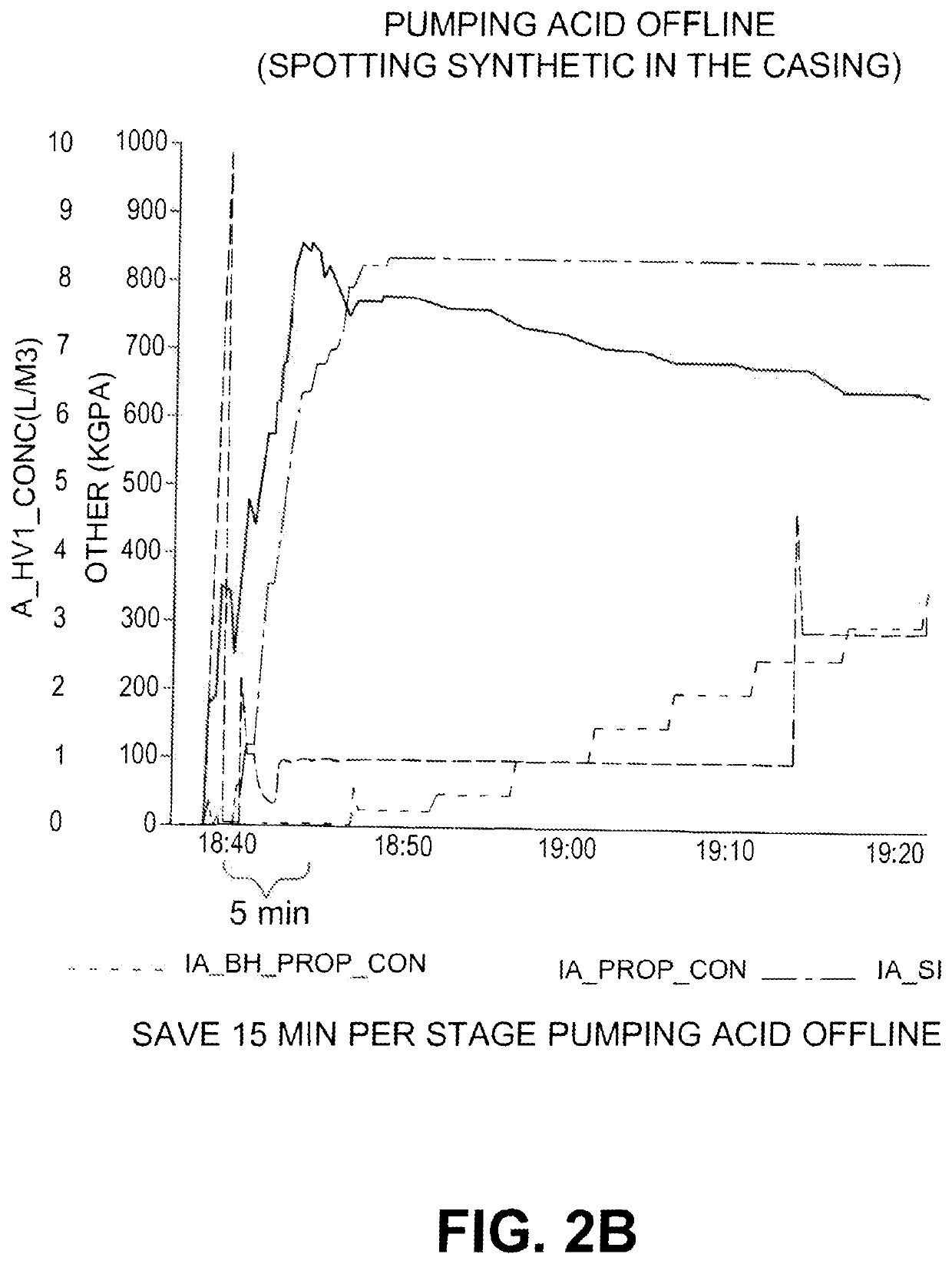Use of Sulfonic Acids in Downhole Methods
a technology of sulfonic acid and downhole method, which is applied in the direction of fluid removal, borehole/well accessories, chemistry apparatus and processes, etc., can solve the problems of increasing or non-optimal injection rate and associated pressure during stimulation, prone to pitting type corrosion rather than uniform corrosion, and achieves effective corrosion inhibition. , the effect of compounding water savings and other time saving
- Summary
- Abstract
- Description
- Claims
- Application Information
AI Technical Summary
Benefits of technology
Problems solved by technology
Method used
Image
Examples
example 1
Formulation of a Sulfonic Acid Composition
[0063]To prepare a sulfonic acid composition to use in a method according to a preferred embodiment of the present invention, one follows this possible solubilization process (although there may be several other preparation processes). For an acidic composition containing a 50 wt % p-TSA, one first weighs out 150 g of solid p-TSA into a beaker or flask. Then the solid is diluted with water up to a 250 ml mark. Start by combining the toluenesulphonic acid with the water and mix thoroughly for a few minutes until the solid is fully dissolved. Subsequently, if desired the additives can be added. For example, according to one embodiment, one adds 2-Propyn-1-ol, complexed with methyloxirane, and potassium iodide. Circulation is maintained until all products have been solubilized. Table 1 lists the components of the composition of Example 1, including their weight percentage as compared to the total weight of the composition and the CAS numbers of...
PUM
| Property | Measurement | Unit |
|---|---|---|
| temperatures | aaaaa | aaaaa |
| volume percentage | aaaaa | aaaaa |
| volume percentage | aaaaa | aaaaa |
Abstract
Description
Claims
Application Information
 Login to View More
Login to View More - R&D
- Intellectual Property
- Life Sciences
- Materials
- Tech Scout
- Unparalleled Data Quality
- Higher Quality Content
- 60% Fewer Hallucinations
Browse by: Latest US Patents, China's latest patents, Technical Efficacy Thesaurus, Application Domain, Technology Topic, Popular Technical Reports.
© 2025 PatSnap. All rights reserved.Legal|Privacy policy|Modern Slavery Act Transparency Statement|Sitemap|About US| Contact US: help@patsnap.com



